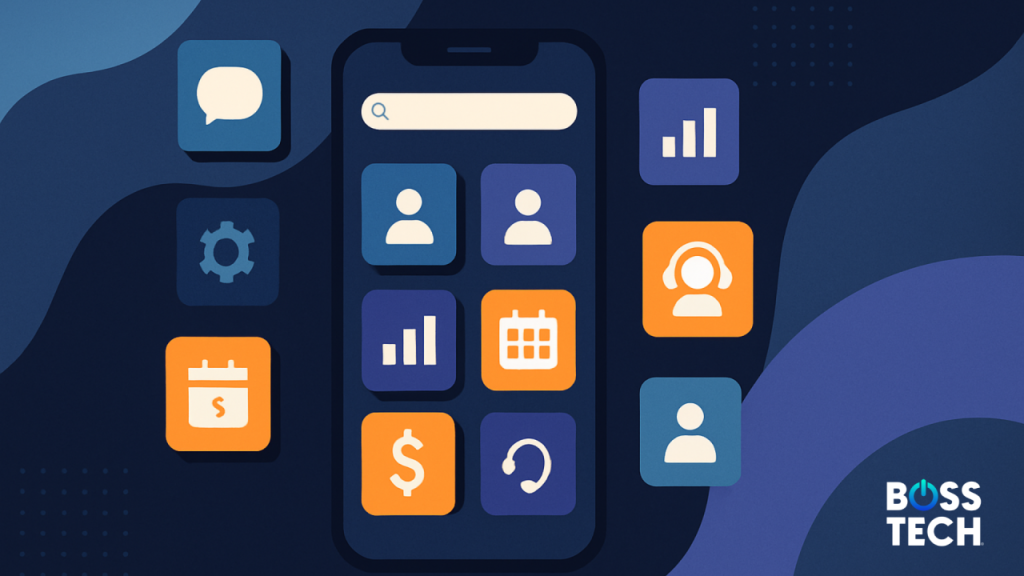SuperApps: The Future of Digital Experience Is Modular, Mobile, and Composable
Imagine opening a single app on your phone that replaces your banking app, your team chat tool, your calendar, your task manager, and even your customer service portal, all without ever visiting another app store.
Welcome to the world of SuperApps.
What Is a SuperApp?
Coined from the likes of WeChat and Grab, a SuperApp is a mobile-first platform that provides a core set of features along with access to a growing ecosystem of MiniApps. Think of them like plug-ins or microservices users can activate, customize, and remove at will.
These aren’t just bundled apps. SuperApps are intentionally designed to support composable digital experiences, where users, developers, and organizations can shape the platform to their specific needs.
It’s like carrying a Swiss army knife -one where you decide which tools it holds.
Why SuperApps Are Gaining Momentum
According to Gartner, by 2027 more than half of the global population will use multiple SuperApps every day.
Why now?
- Mobile-Native Expectations: Gen Z and younger Millennials have grown up in an app-saturated world. They expect unified, elegant, on-demand mobile experiences that don’t require app-switching or juggling multiple logins.
- Composable Business Strategies: Enterprises are moving toward composable architectures -loosely coupled systems that allow fast assembly and reconfiguration. SuperApps are the front-end expression of this movement, enabling agility without sacrificing consistency.
- Data-Driven Personalization: SuperApps centralize authentication, permissions, and preferences. This enables cross-app personalization without requiring users to re-input data or preferences over and over.
- Platform Economies of Scale: Much like app stores, SuperApps benefit from ecosystems. Internal teams and third-party developers can co-create MiniApps, extending the platform’s value exponentially.
How SuperApps Actually Work
Think of a SuperApp as a container. It has its own capabilities — like messaging, search, or dashboards, but also supports an ecosystem of MiniApps. These MiniApps might handle:
- Submitting an expense report
- Booking a client call
- Updating a customer profile
- Viewing key metrics from multiple SaaS tools
Importantly, users don’t need to leave the SuperApp environment. They browse and activate MiniApps directly within the platform. There’s no separate marketplace, no external login, and no learning curve beyond the core UX.
For developers, modern tools like low-code platforms, MXDPs (multiexperience development platforms), and PaaS solutions make it easier than ever to build, deploy, and maintain MiniApps.
Enterprise Use Cases: Customers and Employees Alike
While many SuperApps began in consumer fintech (e.g., PayTM, Revolut), the model is quickly moving into the enterprise.
For Customers:
- A single app to manage all services across a brand
- Personalized offers, support, and services -without app-switching
- Consistency in design and security, even across different service types
For Employees:
- Access to HR, IT, CRM, and productivity tools in one interface
- Reduced onboarding time and context-switching
- Real-time insights, messaging, and approvals from a unified workspace
This centralization improves UX, reduces tool sprawl, and supports data normalization, a key step toward better decision-making with AI.
The Challenge: It’s Not Just Technology, It’s Ecosystem
The biggest hurdle isn’t building the tech, it’s building the ecosystem.
MiniApps need consistent design, shared authentication, and cooperative data policies. Internal silos and inconsistent standards can limit a SuperApp’s effectiveness. Similarly, overloading a SuperApp with too many disjointed MiniApps can confuse users rather than streamline experiences.
A successful SuperApp strategy requires more than APIs and SDKs — it requires cultural alignment across teams and partners.
The Bottom Line: SuperApps Aren’t Just an App Trend — They’re a Platform Shift
Gartner’s insights are more than trendspotting. SuperApps signal a paradigm shift in how we think about digital experiences -from fragmented apps toward unified, modular, and personalized ecosystems.
This isn’t about building a bigger app. It’s about building a better way to work, collaborate, and serve, whether you’re a global enterprise or a growing business ready to leap ahead.

